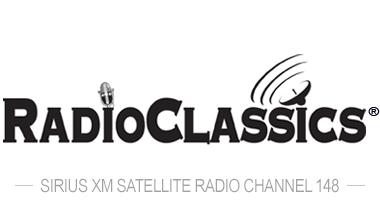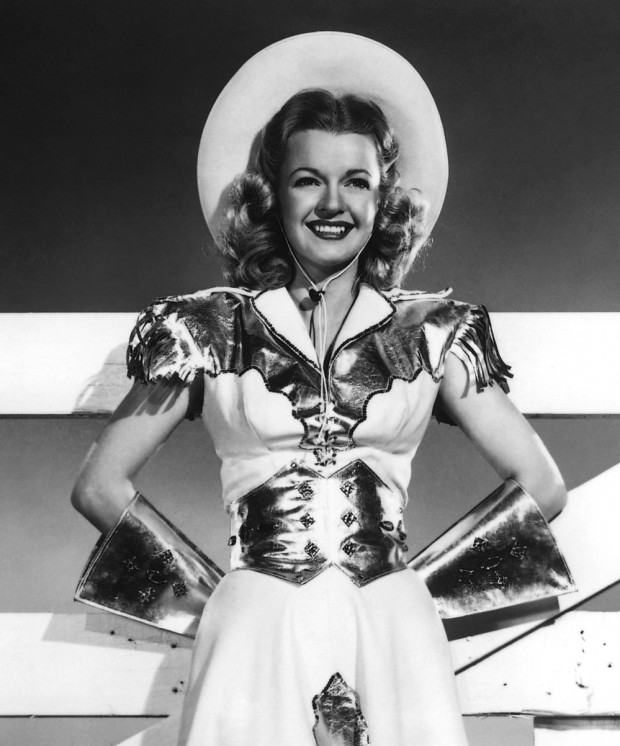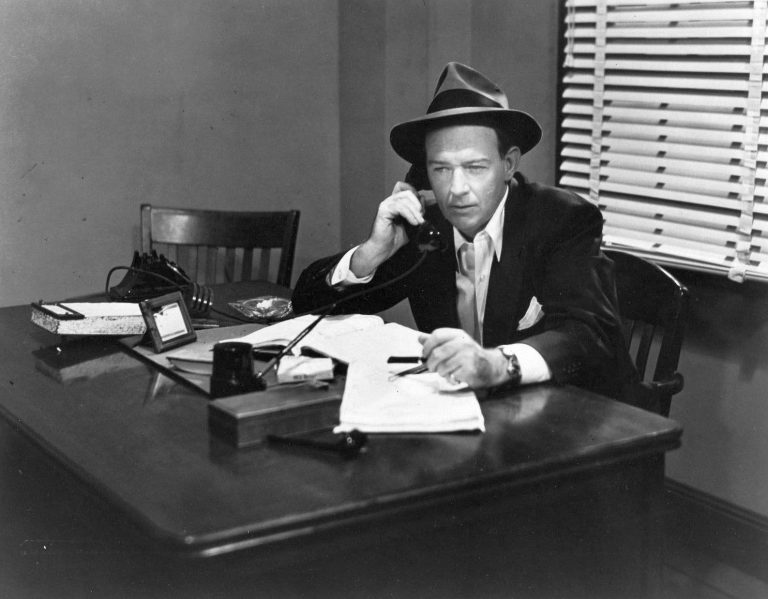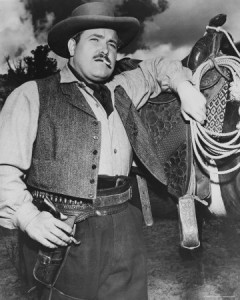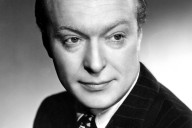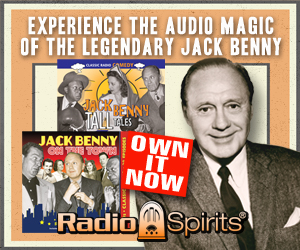By Ivan G Shreve Jr
On January 14, 1953, TV’s This is Your Life paid tribute to “The King of the Cowboys”—none other than Roy Rogers himself. Host Ralph Edwards presided over some predictably teary-eyed moments during the half-hour broadcast, including a touching reunion with Roy and his parents, his three sisters, and the musical group known as The Sons of the Pioneers. (No kidding, friends and neighbors—you’d have to be a robot not to have cried during all this.)
But there were lighter moments to go with the sentiment, too. One of these occurred when Edwards asked the man of the hour if anything significant happened during the production of one of his B-Westerns, Cowboy and the Senorita (1944). Before Roy could answer, a female voice from backstage cried out: “If he doesn’t, he just better not come home tonight!” The audience roared with laughter, recognizing the voice as that of Dale Evans, a.k.a. Mrs. Roy Rogers. The actress-singer born Frances Octavia Smith on this date in 1912 in Uvalde, Texas had by this time already ascended the sagebrush throne to become “The Queen of the West.” Of course, radio listeners were already well acquainted with the talents of Her Majesty long before she climbed aboard her trusty steed Buttermilk.
About that “Francis Octavia” handle—Dale’s parents Walter and Betty Sue decided that would be the birthname of their first child…but for unexplained reasons, the doctor recorded her name on the birth certificate as “Lucille Wood Smith.” (Dale didn’t learn about this faux pas until the 1950s, when she was applying for a passport.) The young Dale spent her childhood years on a farm in Ellis County, and because her mother played piano at the local Baptist church, Dale would delightfully sing gospel hymns in accompaniment. Evans was a very bright and precocious girl, skipping several school grades while hungry for a performing career. She learned to play the piano through a combination of lessons and by ear, and this led to singing and playing that very instrument in high school with a ukulele band.
After a failed first marriage (which resulted in the birth of a son at age fifteen that her movie studios would claim was her brother to stave off any tongue-wagging), Dale ended up in Memphis with her mother. The aspiring young vocalist had a habit of singing while she worked at her secretarial job in an insurance firm. The boss was impressed and suggested that she demonstrate her talent on a local radio show sponsored by the company. That led to multiple engagements performing at service clubs, followed by gigs at Memphis radio stations WMC and WREC. By then, the one-time Frances Octavia had already decided on “Dale Evans” as her professional name.
Dale Evans endured two additional unhappy marriages in her continued determination to pursue a show business career. From Dallas to Chicago, she performed with jazz, blues, and big band aggregations, slowly burnishing her professional credentials. It was in the Windy City that she was offered a screen test and then a contract with 20th Century-Fox, resulting in small roles in such films as Orchestra Wives (1942) and Girl Trouble (1942). A year later, Dale would start punching a time clock at Republic Pictures. One of the movies that she made there was Here Comes Elmer (1943), in which she co-starred with comedian Al Pearce…who played himself and his radio alter ego, Elmer Blurt (from the long-running Al Pearce and His Gang).
In the fall of 1942, Dale landed a plumb gig as the female vocalist on radio’s highly-rated Edgar Bergen-Charlie McCarthy Show. Evans sang and joshed with Bergen and his dummies for two seasons, and when she wasn’t needed at that microphone she made appearances on the likes of Command Performance, The Fitch Bandwagon, The Kraft Music Hall, and Mail Call. If you came in after the opening paragraph, I’ll let you know that in 1944 Dale was assigned to work on a movie called Cowboy and the Senorita with the man who would become her fourth and final hubby: Roy Rogers. The chemistry between the couple was undeniably appealing, and Roy and Dale continued to make onscreen magic in B-Westerns like The Yellow Rose of Texas (1944), Bells of Rosarita (1945), and Don’t Fence Me In (1945). Dale would also grace Republic’s non-Rogers features like The Big Show-Off (1945) and Hitchhike to Happiness (1945); the latter re-teaming her with Al Pearce.
Roy and Dale’s onscreen romance gradually led to a real-life one. When Rogers’ second wife, Arline, died a week after giving birth to their son Dusty in 1946, Dale divorced husband number three and married Roy on New Year’s Eve (the fourth time’s a charm!) a year later, officially becoming Mrs. King of the Cowboys. Dale, in addition to her feature film duties as Rogers’ leading lady, also assumed that role on Roy’s radio program, The Roy Rogers Show, beginning in the fall of 1946 when the series moved to NBC from Mutual. Oddly enough, Republic Pictures was convinced that Rogers’ fans wouldn’t tolerate a married couple in his westerns and for a brief period, Roy worked with the likes of Jane Frazee and future Annie Oakley star Gail Davis in his oaters. But the fans protested so loudly that the studio returned Dale to her rightful co-star status in 1949; she would make six features with Roy in 1949 and 1950 before taking a break to give birth to a baby girl…then she resurfaced to appear in her husband’s final two westerns for Republic, South of Caliente and Pals of the Golden West (both 1951).
Roy and Dale kept wishing radio listeners “Happy Trails” on the weekly Roy Rogers Show until 1955 (the series aired on Mutual from 1948-51, and then returned to NBC until it left the airwaves). Occasionally, the couple would appear as themselves on such shows as The Bob Hope Show and The Kraft Music Hall (with Al Jolson)…with Dale going solo on the likes of The Philco Radio Hall of Fame, The Jimmy Durante-Garry Moore Show, All-Star Western Theatre, and The Dean Martin & Jerry Lewis Show. The Rogers’ radio years overlapped with the run of their successful television show that began airing on NBC-TV in the fall of 1951 (one of the reasons why Roy and Dale made no more movie westerns is that Republic did not want their stars working on the small screen). The TV Roy Rogers Show ended in 1957, and continues in heavy rerun rotation to this day. Excepting a brief return to the boob tube in 1962 with a variety series, The Roy Rogers and Dale Evans Show (it lasted just a season), Roy and Dale rested on their laurels and made the rounds on various variety programs in a guest star capacity. Roy and Dale were the envy of all Hollywood couples with a marriage that lasted until Roy’s passing in 1998—Dale followed him in 2001 at the age of 88.
Copyright 2017 Ivan G Shreve Jr and RSPT LLC. All rights reserved.
